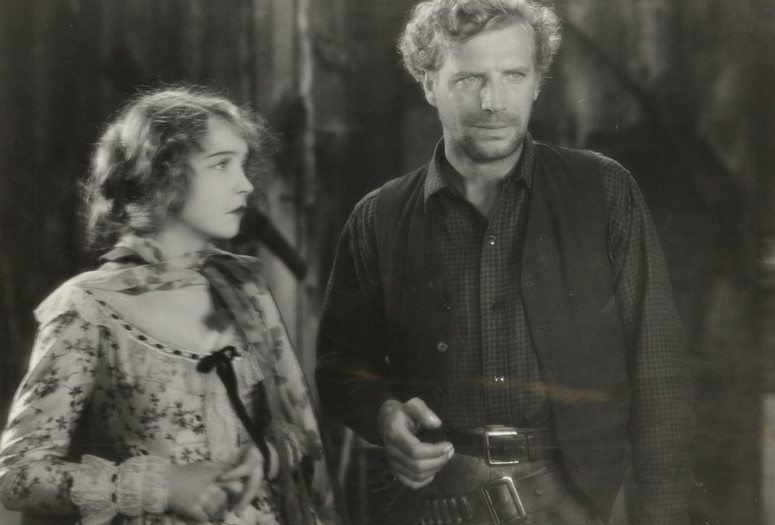
The Wind. 1928. USA. Directed by Victor Sjöström. Screenplay by Frances Marion. With Lillian Gish, Lars Hason, Montagu Love, Dorothy Cumming. Preserved and digitally restored by The Museum of Modern Art. With the original 1928 music and effects soundtrack. New York restoration premiere. 95 min.
From his first, pioneering work in Sweden, Victor Sjöström was concerned with the intersection of landscape and psychology, with the way the natural world both shaped the substance of his characters’ thoughts and feelings, and reflected those thoughts and feelings in its metaphoric grandeur. The ocean of Ingeborg Holm (1913) suggests both the depths and the tumult of its main character’s descent into madness; the mountains of The Outlaw and His Wife (1918) embody both the spiritual, transcendent plan of the central couple’s love for each other, as well as the brute physicality of the social constraints that his lovers will never quite escape.
Sjöström largely left his interest in landscape behind in Sweden when he came to America in 1923, with the spectacular and singular exception of The Wind. The setting is the desert of western Texas, a land of high temperatures, low rainfall, and no shade, into which a frail young woman from the east (Lillian Gish, in one of the great performances of silent film) has been thrust against her will, totally unprepared for the desolation—physical, social, psychological—that awaits her. The assault is total and unrelenting, like the raw wind that never ceases to blow across the lunar landscape. (The exteriors were shot, under difficult conditions, in the Mojave Desert of southern California.)
Just as the ghostly vehicle of The Phantom Carriage, Sjöström’s Swedish masterpiece of 1921, becomes the image of death, so does Sjöström place a symbol in the desert sky: a wild horse that becomes the face of the wind, irrational and unstoppable, and also of the emotional pressures growing on Gish’s Letty, driving her relentlessly toward a once-unthinkable act.
MoMA’s digital restoration is based on two 35-millimeter prints acquired from M-G-M in the 1930s. Although the film was shot silent, it was released with a synchronized score and sound effects with a frame rate of 24 fps, which this restoration respects.